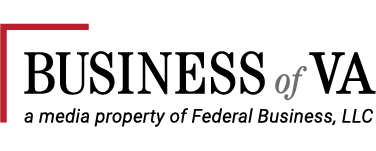The pandemic launched a dramatic change in the way almost everyone works. But at the VA, it wasn’t just dramatic change—it was extraordinarily rapid transformation at scale, involving the second-largest federal agency, its nearly 500,000 employees and the 19 million-plus veterans who may need to visit the more than 1,200 VA health care facilities across the country.
For the VA, the stakes were high in the shift to remote operations. The sheer volume of users creates inherent risks to customer experience—a single outage can set off magnitudes of ripple effects. Veterans and their families going untreated or unable to access their benefits is serious business, as is the ability for a massive VA workforce to be able to work remotely, including to help deliver those benefits, in a pandemic.
With a significant IT modernization effort already underway, VA IT leaders pivoted quickly to meet newly emerging demands the pandemic unleashed. According to Dave Catanoso, director of the VA’s Enterprise Cloud Services Office, the agency’s forward momentum in the cloud was integral to rising to the challenges of COVID-19.
“We went from 60,000 employees working from home to 170,000-plus at the peak during the pandemic—almost overnight. Prior to the pandemic, we were doing approximately 25,000 telehealth visits per month; today we support well over 40,000 visits in a day,” Catanoso said at the ScienceLogic Symposium earlier this year. “The increase in capacity and the need to do it were both tremendous. We did in a matter of days or weeks what would normally take years.”
Among those actions: rapidly scaling up the VA Video Connect system in on-premises environments while simultaneously standing up a matching environment in the agency’s Care 2 cloud to deliver scalable capacity beyond on-premises.
“Doing both in parallel allowed us to rapidly scale up to meet that demand…literally almost overnight,” Catanoso said.
Looking ahead, some key priorities will include improving the capacity to monitor connectivity between systems and users in on-premises settings, remote environments and in the cloud, tracking performance end-to-end, Catanoso said. He’s also looking to strengthen monitoring for cloud-native systems and management of the agency’s hybrid infrastructure.
The biggest challenge to these priorities? The complex tool sets currently involved. But it’s a challenge Catanoso is actively working to solve.
The Keys to Success
Catanoso has been vocal about the need for an ecosystem of tools that can work together to achieve mission requirements and objectives. Primarily, tool integration is the name of the game.
What does that mean in practice? Essentially, the different tools for monitoring application performance, the logging and analytics tools, the help desk capabilities and all the various applications helping deliver services must work together in harmony, regardless of the different vendors providing them.
“Having an integrated environment where we take the best-of-breed tools for their specialties and get them all working together to provide the best capabilities for our veterans—that’s really the goal,” Catanoso said. “It’s not about which specific tool; it’s having all the tools working together to do the job and provide the best solution overall.”
AIOps is one critical capability underpinning much of this—both supporting integration and also being integrated. By employing AI-enabled tools and applications throughout the IT operations management structure, IT operators gain greater visibility that more comprehensively captures all the different tools and holistically monitors the ecosystem, including detecting anomalies and proactively preventing disruptions.
“Ensuring better availability of applications and services, improved response and resolution time to incidents that do happen, automating everything we can to increase speeds—these are all goals for our AIOps initiative,” Catanoso said. “Modernizing our digital strategy, increasing the speed of innovation and delivering better services to veterans at a faster pace…is always at the forefront of our thinking.”
AIOps tools will gain further momentum with the broader adoption of cutting-edge approaches. That includes automation that frees up staff for higher-order tasks and predictive analytics that shape constantly evolving algorithms for optimized performance. Both will leverage the use of cloud, AI, data and analytics to feed an aggregate service view that can also be granular—and enlightening.
But just as important as the tools and technologies will be the ease of integrating them, allowing for an ecosystem of providers augmenting the government-wide mission to serve the public. The VA’s transformation is both an example for and a reflection of agencies’ often non-linear path to modernization. Having the right tools readily available helps pave the way—including by giving the government community and their constituencies access to resilient digital experiences. Ensuring that access through automation and tightly integrated infrastructure benefits everyone, regardless of where in their journey they may be.
(Please note: all comments and opinions expressed in this commentary belong solely to the author and do not necessarily reflect the opinion of Business Of VA or Federal Business LLC.).

Dave Link
CEO, ScienceLogic

0 Comments